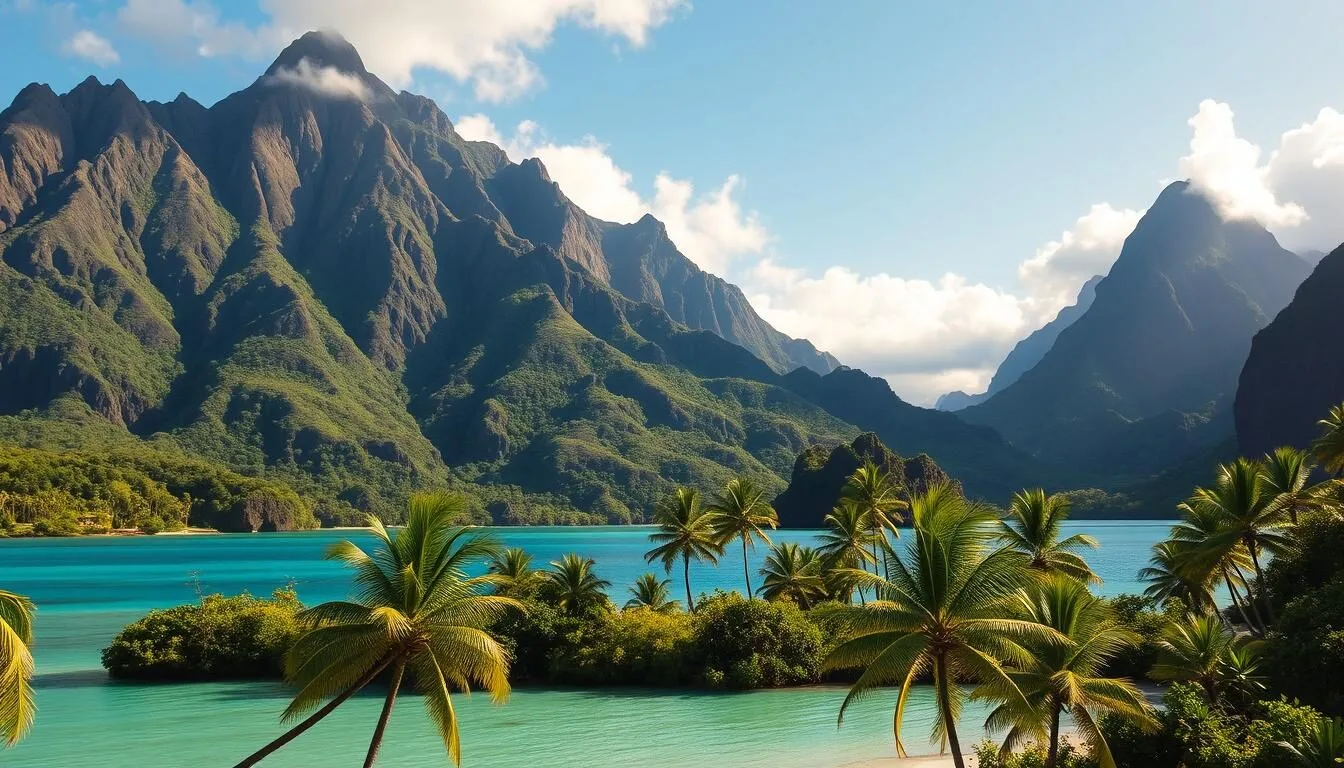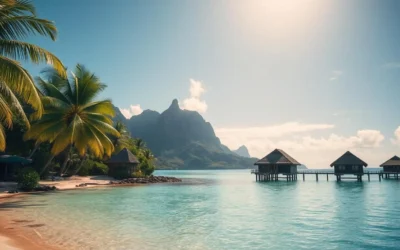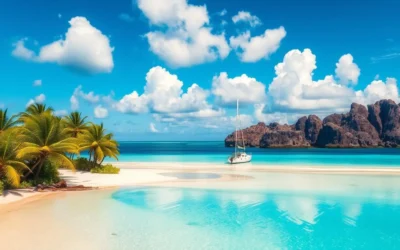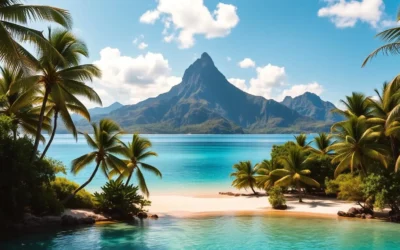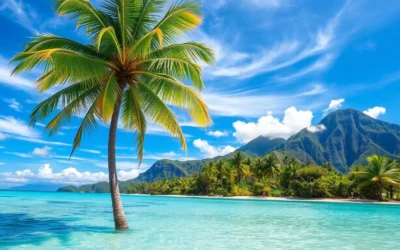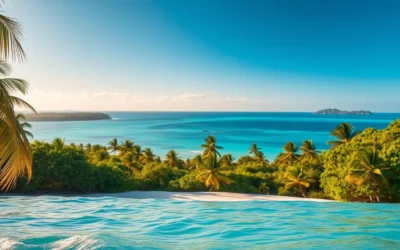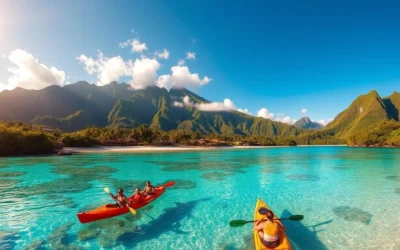Nestled in the heart of the Marquesas islands, a gem awaits discovery, offering an unspoiled and authentic South Pacific experience. With fewer than 600 residents, this secluded paradise remains largely untouched by mass tourism, preserving its natural beauty and traditional way of life.
As you step foot on this enchanting island, you’ll be greeted by dramatic landscapes, from lush valleys to rugged coastlines, and a rich cultural heritage that dates back centuries. The local community welcomes visitors with open arms, sharing their customs and traditions, and providing a glimpse into a life that has remained largely unchanged for generations.
Whether you’re an adventurous traveler or simply looking to unwind in an unspoiled paradise, this comprehensive guide will walk you through the top activities and experiences that French Polynesia has to offer.
Discovering the Wild Beauty of Fatu Hiva Island
As you step foot on Fatu Hiva, you’re about to uncover the untouched beauty of French Polynesia’s most remote island. Located in the southernmost part of the Marquesas archipelago, Fatu Hiva is a haven for those seeking an unspoiled and authentic Pacific island experience.
The Most Remote Island in the Marquesas
Fatu Hiva is situated at the southernmost point of the Marquesas Islands, making it the most isolated and least visited of all inhabited islands in French Polynesia. This remoteness has preserved the island’s natural beauty and cultural heritage, offering visitors a unique and unspoiled experience. The island’s dramatic geography features steep volcanic mountains rising directly from the sea, creating breathtaking vistas that have inspired artists and adventurers for generations.
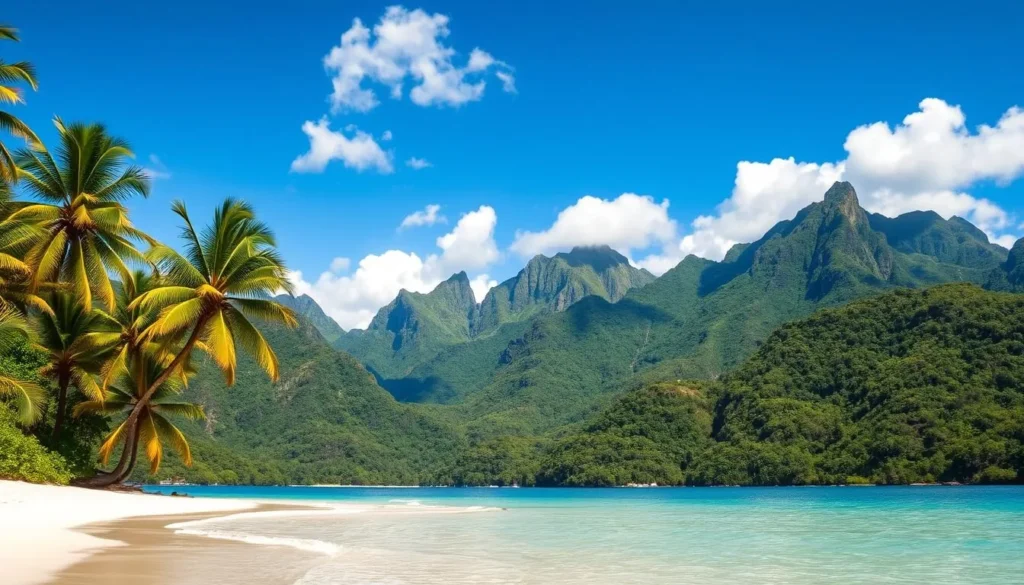
Understanding the Island’s Geography and Culture
The island’s unique position in the Marquesas Islands means it receives more rainfall than its northern neighbors, resulting in lush valleys and abundant tropical vegetation that contrast dramatically with the rugged coastline. The culture of Fatu Hiva remains deeply rooted in traditional Marquesan customs, with residents practicing ancient crafts like tapa cloth making and wood carving that have been passed down through generations. As you embark on a road trip around the island, you’ll visit two main settlements – Hanavave and Omoa – each offering glimpses into authentic Marquesan village life rarely experienced by outside visitors.
Understanding the concept of “Mana” – the spiritual life force that Polynesians believe connects all living things – will enhance your appreciation of Fatu Hiva’s natural wonders and cultural significance. This island is truly a special place where you can connect with nature and experience the rich heritage of the Marquesan people.
Explore the Breathtaking Bay of Virgins (Hanavave Bay)
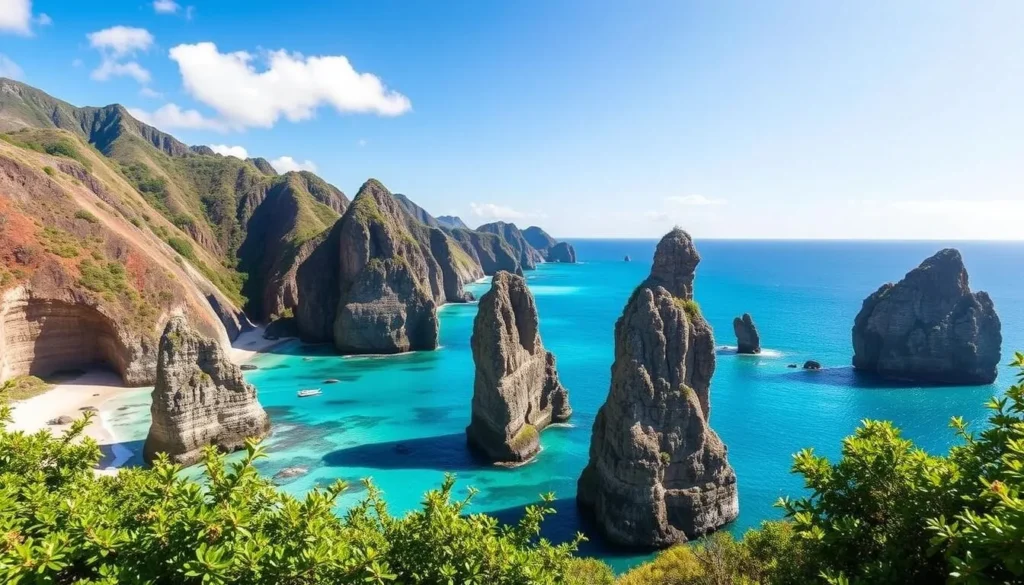
The Bay of Virgins, known locally as Hanavave Bay, is Fatu Hiva’s crown jewel, boasting some of the most breathtaking scenery in the Marquesas Islands. This stunning bay is renowned for its dramatic basalt pillars rising majestically from the sea, making it one of the most beautiful bays in the South Pacific.
Spectacular Cliff Formations and Viewpoints
The Bay of Virgins is characterized by its spectacular cliff formations that create a dramatic landscape. The viewpoint above Hanavave village offers a comprehensive panorama of the bay, requiring a moderately challenging hike that rewards you with unparalleled views of the coastline and surrounding mountains. The cliffs surrounding the bay are a marvel, with their dark basalt rock formations providing a striking contrast to the turquoise waters below.
Photography Tips for Capturing the Perfect Sunset
To capture the perfect sunset at Hanavave Bay, timing is everything. You’ll want to visit the bay in the late afternoon when the setting sun bathes the towering cliff formations in golden light, creating a spectacular natural light show. For the best photography results, bring a wide-angle lens to capture the expansive scale of the bay, and consider using a polarizing filter to enhance the contrast between the dark cliffs and the blue ocean.
The small black sand beach at the base of the bay provides an intimate perspective of the towering rock formations and serves as a launch point for boat tours that allow you to appreciate the cliffs from sea level. Local guides can share fascinating legends about how the bay got its name and point out specific rock formations that feature in Marquesan mythology, adding cultural depth to your visual experience.
Hike Between Hanavave and Omoa Villages
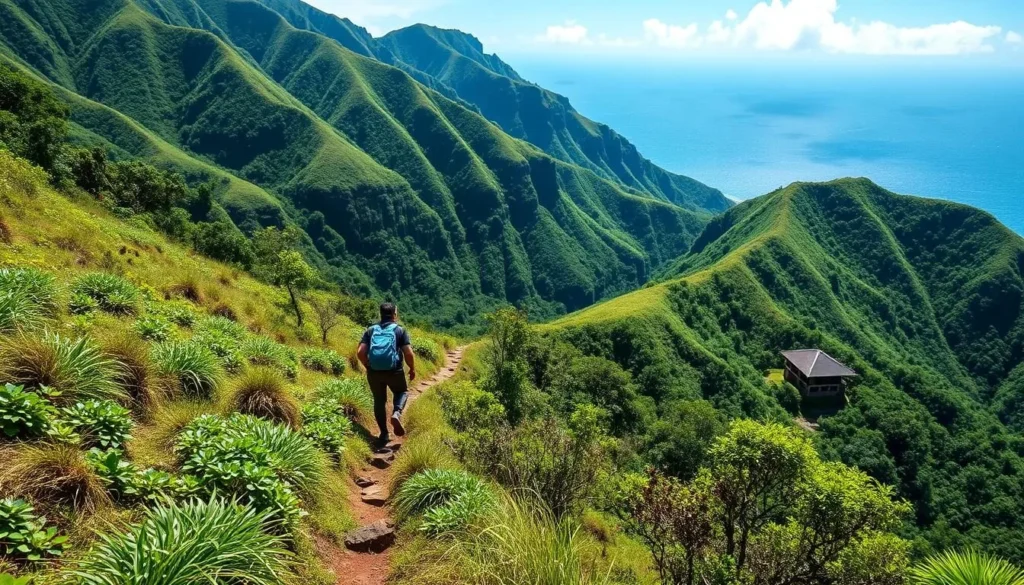
One of the most rewarding experiences on Fatu Hiva Island is hiking the trail that connects Hanavave and Omoa villages. This 17-kilometer trek is moderately challenging and typically takes 4-5 hours to complete.
Trail Details and What to Expect
The trail follows ancient Marquesan routes, passing through diverse ecosystems such as dense tropical forests and open ridgelines. Along the way, you’ll encounter hidden waterfalls that offer refreshing swimming opportunities. Be prepared for significant elevation changes as you cross the island’s mountainous spine.
Panoramic Views and Natural Highlights
At the highest point of the trail, you’ll be rewarded with panoramic views of both sides of the island. This vantage point offers perfect photo opportunities and a chance to appreciate Fatu Hiva’s dramatic volcanic topography. Local guides are highly recommended not only for navigation but also for their knowledge of native plants, wildlife, and cultural sites.
The villages at either end of the trail provide a welcoming place to rest and interact with locals, giving you insight into daily life on this remote island. You can also arrange boat transportation back to your starting point through the locals.
Immerse Yourself in Traditional Marquesan Culture
The island of Fatu Hiva offers a unique opportunity to delve into the history and culture of the Marquesan people. As you explore this remote island, you’ll discover a rich cultural heritage that has been preserved despite centuries of outside influence.
Visit Ancient Archaeological Sites and Tikis
Fatu Hiva is home to some of the best-preserved archaeological sites in the Marquesas Islands. At Lipona, you’ll find enormous tiki statues, some measuring over 2.5 meters, that have stood the test of time. These statues are not only impressive in size but also in the intricate details that depict various aspects of Marquesan culture and mythology. For instance, some tiki statues clearly represent females, while others, like the six-fingered tiki, pose intriguing questions about their origins and significance.
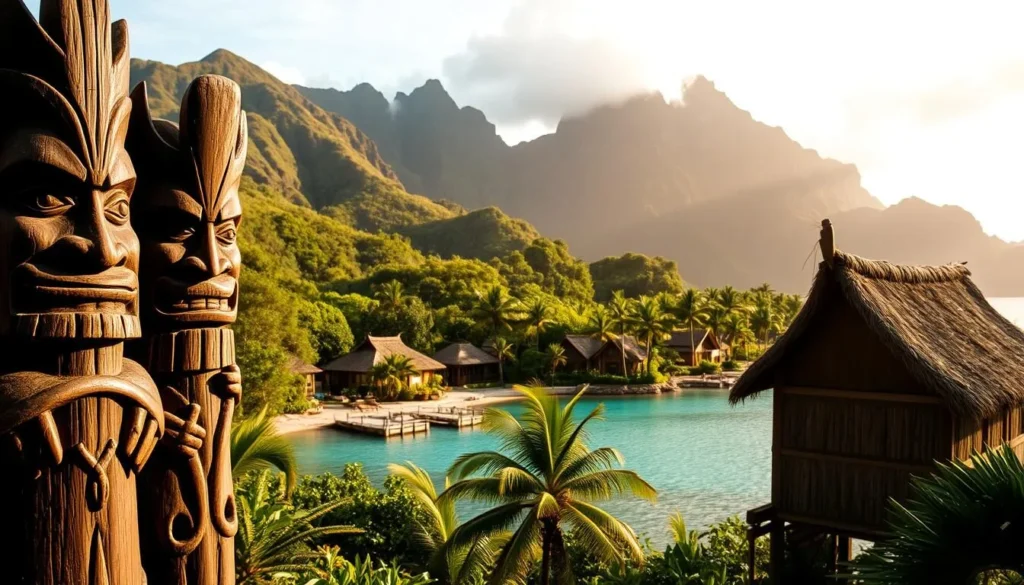
Experience Local Crafts and Tapa Making
The island is renowned for its traditional craft of tapa making, a process that involves beating, drying, and decorating bark cloth to create ceremonial materials and artwork. You’ll have the opportunity to visit local artisans in their workshops, particularly in Omoa village, where skilled craftspeople continue traditions passed down through generations. They create intricate carvings from rosewood and bone, showcasing their exceptional skill and artistry.
| Cultural Experience | Description |
|---|---|
| Visit Archaeological Sites | Explore ancient ceremonial platforms and view impressive stone tiki statues. |
| Local Crafts | Discover traditional tapa making and intricate carvings by local artisans. |
| Traditional Feast | Participate in a Marquesan feast, enjoying local cuisine and ceremonial dances. |
By immersing yourself in the traditional Marquesan culture, you’ll gain a deeper understanding of the island’s history and the people who call it home. Local guides will help you decipher the complex symbolism in Marquesan art forms, enriching your experience on this captivating island.
Fatu Hiva Island, French Polynesia: Best Things to Do – Top Picks for Water Lovers
Fatu Hiva Island is a paradise for water lovers, with its unique diving and snorkeling opportunities. The island’s remote location and lack of coral reef create a distinct marine environment that’s rich in pelagic species.
Scuba Diving with Manta Rays and Pelagic Species
The waters surrounding Fatu Hiva offer a unique diving experience, with nutrient-rich currents attracting manta rays and other pelagic species. You can expect to encounter these magnificent creatures year-round in the island’s bays. The visibility might be lower than in other parts of Polynesia, typically ranging from 5 to 15 meters, but this actually enhances the chances of spotting large marine life as the plankton-rich waters attract feeding manta rays and occasionally hammerhead sharks.
| Dive Site | Depth Range | Notable Species |
|---|---|---|
| Hanavave Bay | 10-30 meters | Manta Rays, Hammerhead Sharks |
| Omoa Bay | 5-20 meters | Colorful Reef Fish, Moray Eels |
Snorkeling and Swimming in Pristine Bays
For those who prefer shallower waters, snorkeling opportunities abound in the calmer bays, particularly Hanavave Bay. Here, you can observe colorful reef fish, moray eels, and occasionally sea turtles in the shallower waters close to shore. Local guides can also arrange boat trips to secluded beaches and swimming spots that are inaccessible by land, offering pristine water experiences away from the main villages.
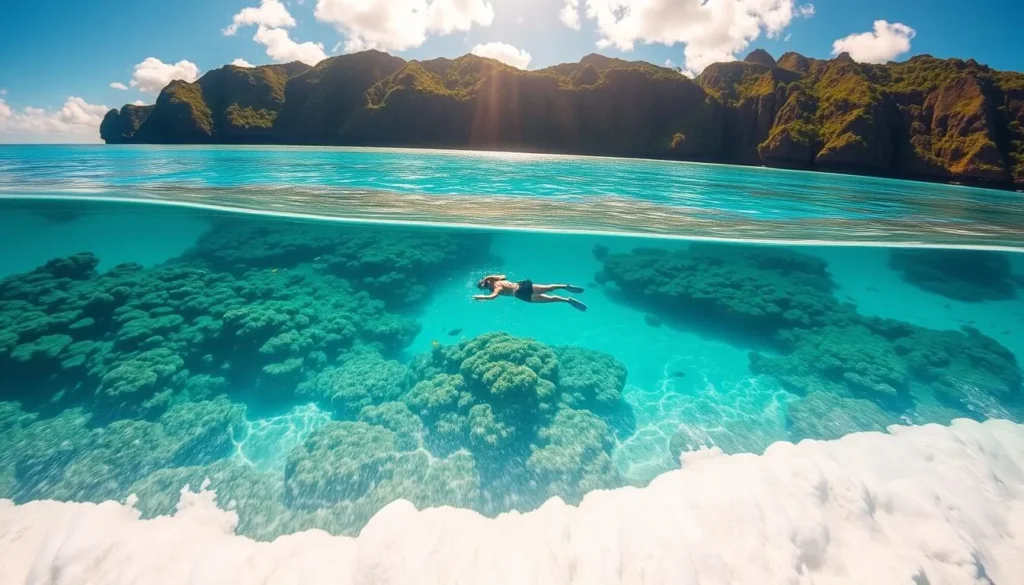
The unique marine ecosystem around Fatu Hiva reflects its isolated position, with species combinations you won’t find elsewhere. This makes it a fascinating destination for underwater naturalists and photographers. Whether you’re diving or snorkeling, Fatu Hiva’s waters promise an unforgettable experience.
Explore the Lush Valleys and Waterfalls
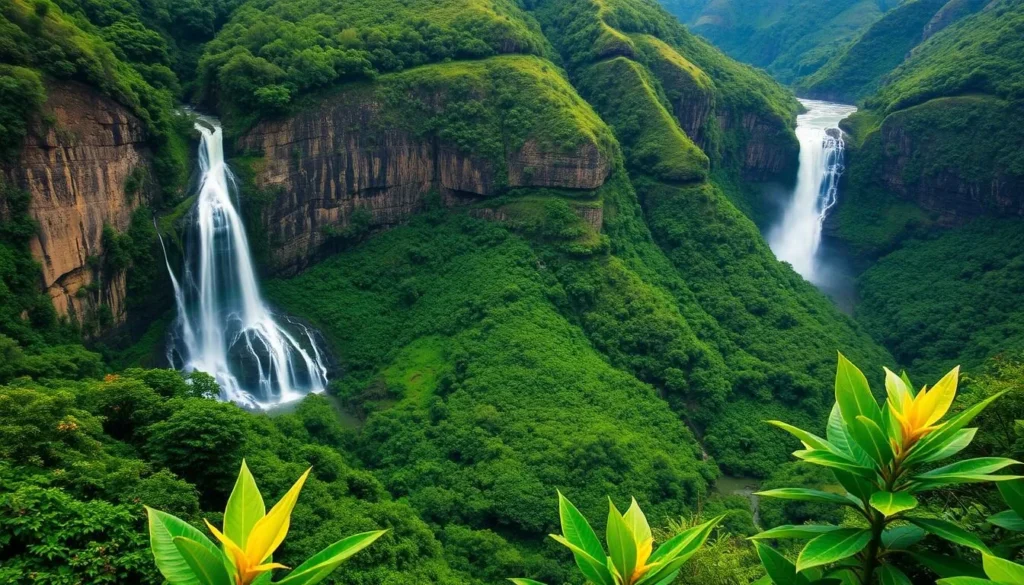
As you venture into Fatu Hiva’s lush valleys, the island’s untouched beauty unfolds before your eyes. The journey takes you along the coastal road and into the heart of the island, where the air is filled with the scent of tropical flowers and the sound of cascading water.
Guided Tours to Hidden Waterfalls
Fatu Hiva’s interior valleys are home to some of the most pristine tropical ecosystems in French Polynesia. Guided tours will take you to hidden waterfalls that cascade from high cliffs into natural swimming pools, perfect for cooling off after a hike. These tours often include cultural components, as many sites hold spiritual significance to local Marquesans.
You’ll learn about the legends and traditional knowledge associated with these sites, including the healing properties of certain plants. This enriching experience allows you to connect with the island’s culture and natural beauty.
Flora and Fauna of Fatu Hiva’s Interior
The island’s unique ecosystem supports a wide range of flora and fauna. Fatu Hiva is a paradise for birdwatchers, with rare species such as the endangered Marquesas monarch and fruit dove. The island’s isolation has allowed endemic plant species to flourish, including rare orchids and medicinal plants.
As you explore the interior, you’ll have the opportunity to identify these species with the help of local guides. The journey often concludes at secluded beaches, where you can relax and reflect on the remarkable biodiversity you’ve witnessed.
Your time on Fatu Hiva will be a memorable experience, with the island’s natural beauty and rich culture leaving a lasting impression. Whether you’re hiking through the valleys, swimming in the waterfalls, or simply relaxing on the beach, you’ll be surrounded by the island’s serene atmosphere.
Practical Information for Visiting Fatu Hiva
Before you plan your trip to Fatu Hiva, it’s essential to understand the practical aspects of visiting this remote island in the Marquesas. As part of French Polynesia, Fatu Hiva offers a unique experience, but it requires careful planning.
Best Time to Visit Fatu Hiva Island
The best time to visit Fatu Hiva is during the dry season, from July to December, when rainfall is minimal and temperatures average a pleasant 24-27°C (75-80°F). This period creates ideal conditions for hiking and outdoor activities. Be aware that Fatu Hiva’s location near the equator means it experiences a wetter climate than the northern Marquesas Islands, with the rainy season bringing potential for heavy downpours and hotter temperatures.
How to Get to Fatu Hiva
Getting to Fatu Hiva requires some planning as there are no direct flights to the island. Most visitors arrive via the Aranui5 cargo-passenger ship that makes regular 12-day voyages through the Marquesas Islands from Tahiti, spending one day on Fatu Hiva. For more flexibility, you can fly to Hiva Oa with Air Tahiti and then arrange boat transportation to Fatu Hiva, though this option depends on sea conditions and availability of local boat operators.
Accommodation Options on the Island
Accommodation on Fatu Hiva is limited to a few family-run pensions (guesthouses) and homestays in the villages of Omoa and Hanavave, offering basic but comfortable rooms with authentic Marquesan hospitality. It’s advisable to plan ahead and book your accommodation in advance to ensure availability.
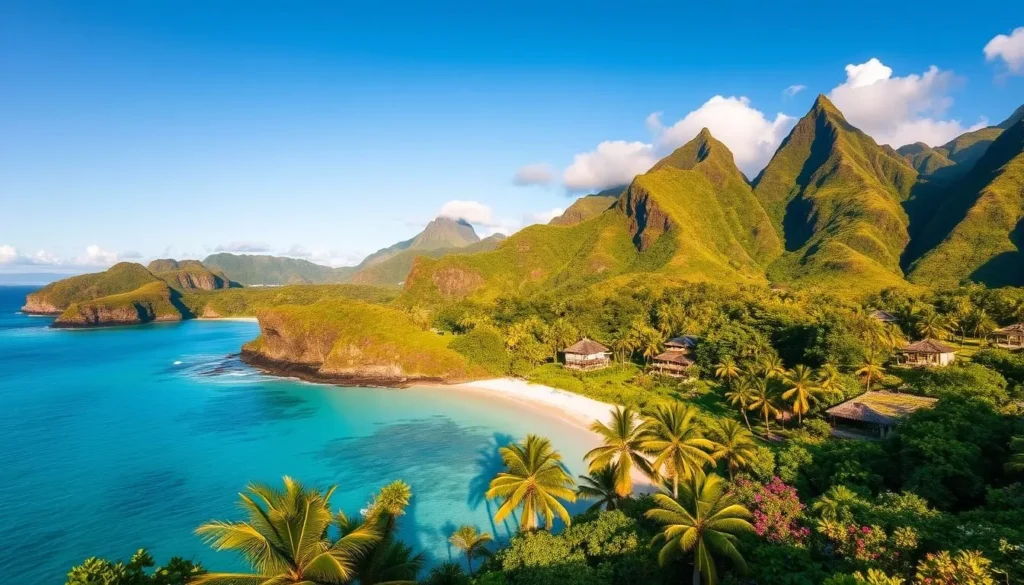
To make the most of your trip, plan to spend at least 2-3 days on the island. Pack accordingly with lightweight, quick-drying clothing, good hiking shoes, insect repellent, and sufficient cash, as there are no ATMs on the island and few places accept credit cards.
Conclusion: The Ultimate Marquesas Experience
Your journey to Fatu Hiva is rewarded with breathtaking natural beauty and a glimpse into traditional Polynesian culture. The island offers a perfect blend of dramatic landscapes, authentic cultural encounters, and natural wonders, making the challenging journey worthwhile. You can time your visit to coincide with seasonal marine life migrations, such as seeing manta rays year-round, hammerhead sharks from July to September, and humpback whales from October to December.
The memories you’ll create on Fatu Hiva, from watching the sunset over the Bay of Virgins to sharing meals with local families, will be among your most treasured travel experiences. While reaching this remote island requires effort, the journey itself becomes part of the adventure. For those seeking authentic travel experiences, Fatu Hiva stands as one of the top destinations in the Marquesas Islands and French Polynesia.
The above is subject to change.
Check back often to TRAVEL.COM for the latest travel tips and deals.
